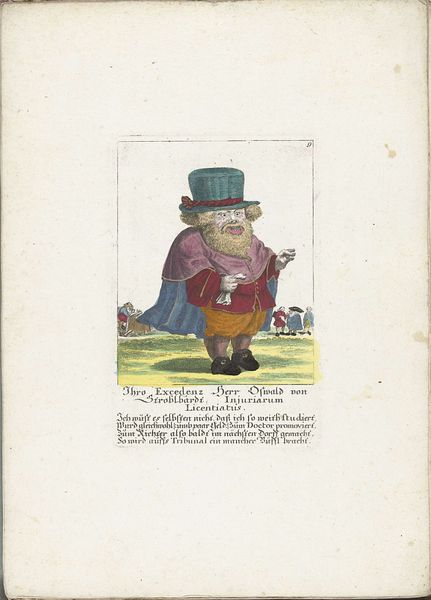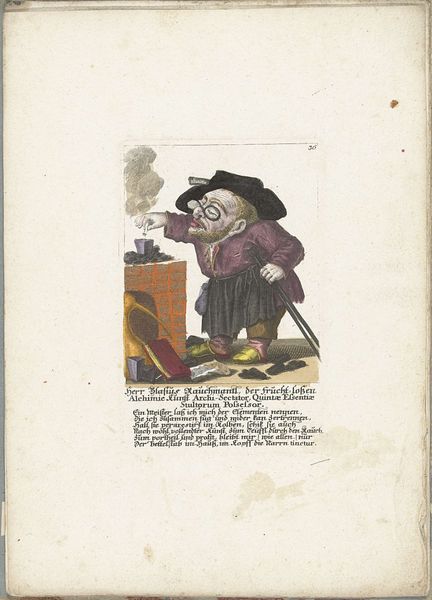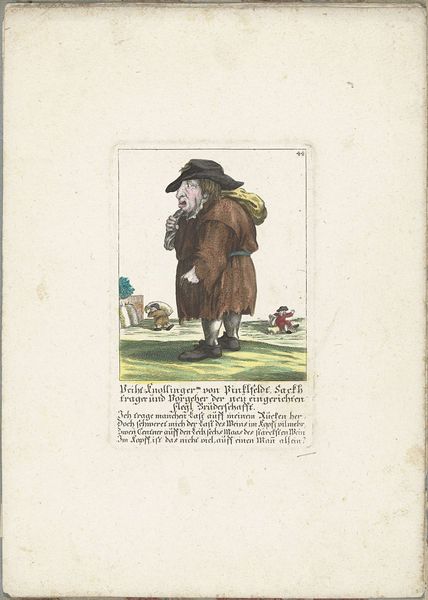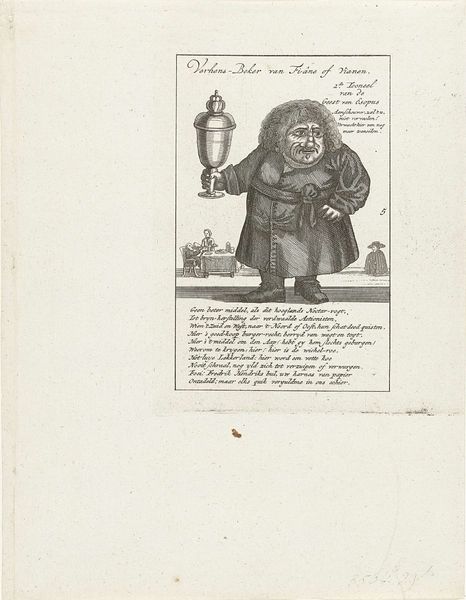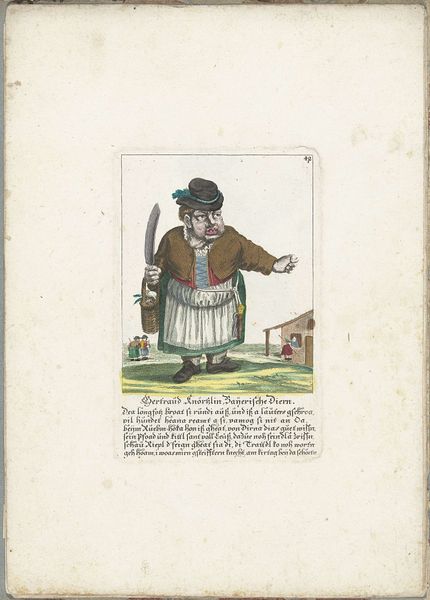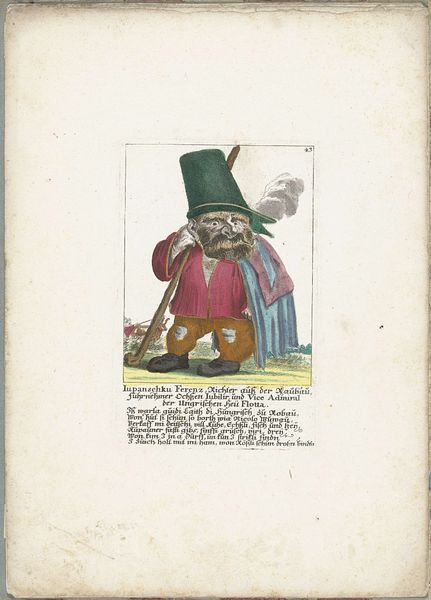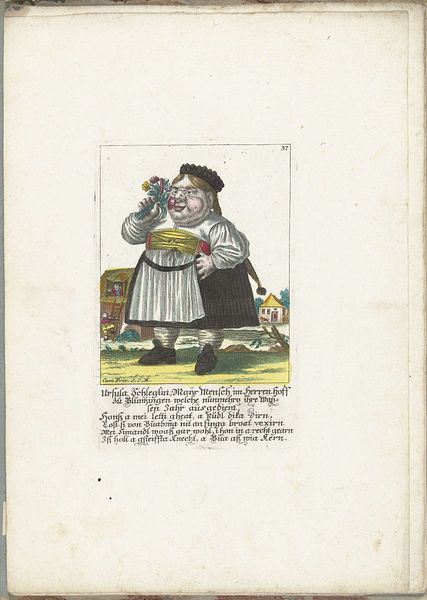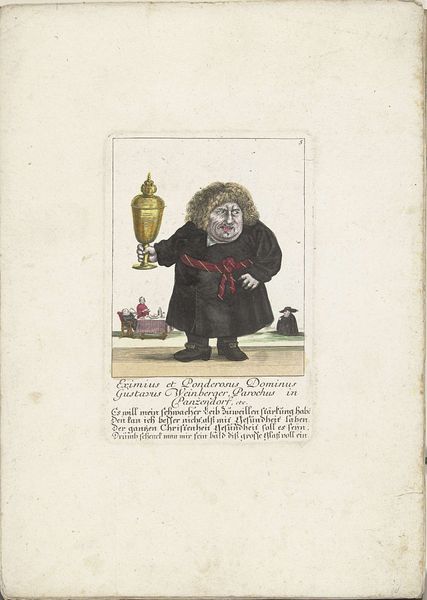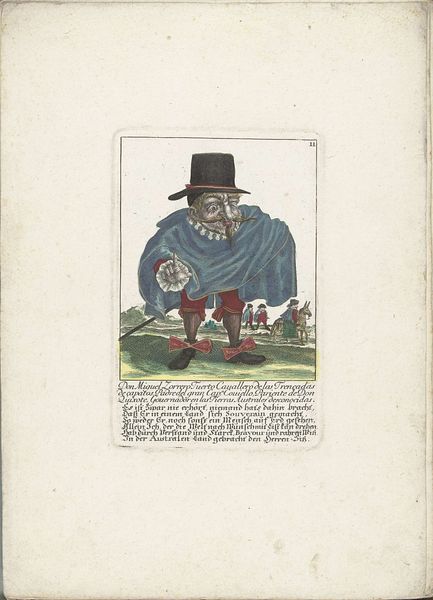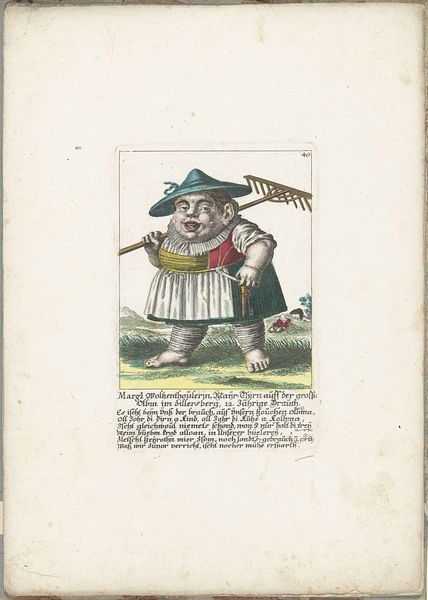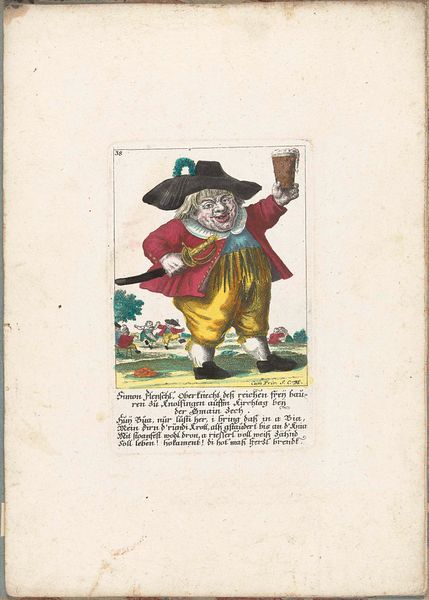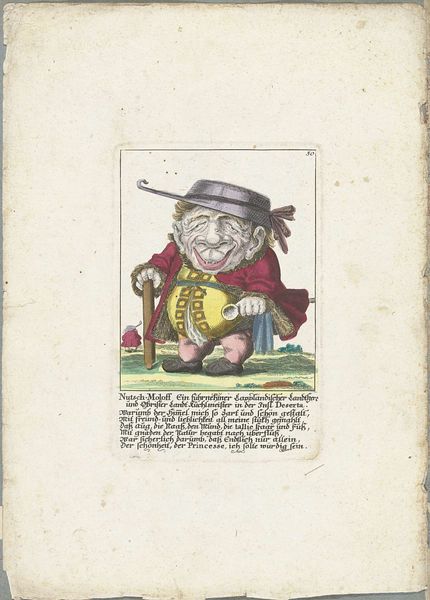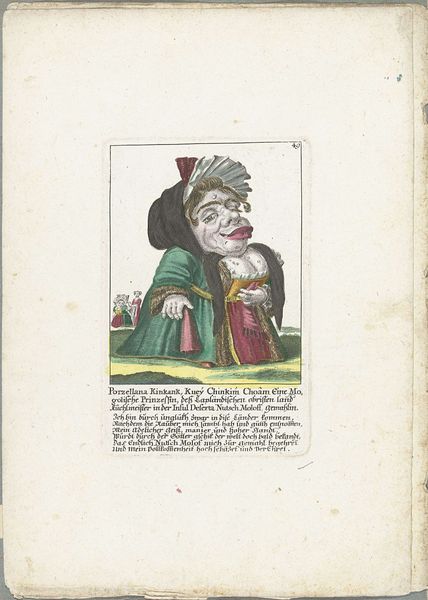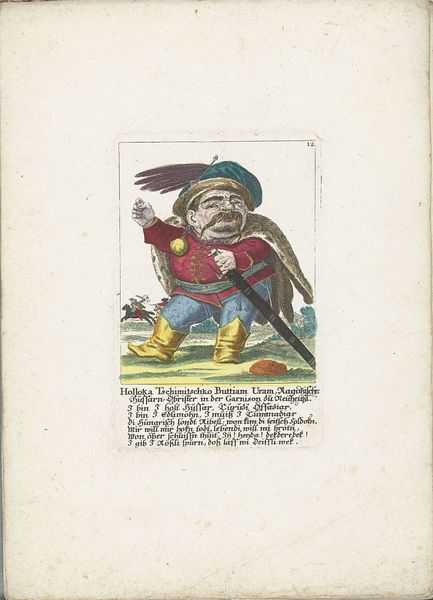
#
aged paper
#
old engraving style
#
personal sketchbook
#
old-timey
#
ink colored
#
19th century
#
sketchbook drawing
#
watercolour illustration
#
sketchbook art
#
watercolor
Dimensions: height 170 mm, width 110 mm, height 320 mm, width 225 mm
Copyright: Rijks Museum: Open Domain
Curator: Take a moment to observe this watercolor from the early 18th century, dating from 1705 to 1715, currently residing here at the Rijksmuseum. Its attributed author is Martin Engelbrecht, and it's entitled “De joodse dwerg Natan Hirschl, ca. 1710”, depicting the Jewish dwarf Natan Hirschl. What's your first reaction? Editor: Stark contrasts. The diminutive figure is sharply delineated against the aged, almost frail paper of a sketchbook page. It creates an almost jarring juxtaposition, emphasizing both the figure’s individuality and its precariousness. Curator: Absolutely. Notice the choice of watercolor. The artist utilizes delicate washes of color, especially around the figure's face and clothing. I find the rendering of Natan Hirschl captivating – it's quite revealing of the historical attitudes toward those with dwarfism in 18th-century Jewish society. We can view the figure through the lens of cultural representation. What does it suggest to you? Editor: It evokes a sense of tension. The figure is carefully outlined. This precise application almost transforms the individual into an allegorical representation of societal differences. How are we meant to perceive the subject through the technical control that we can readily recognize? Curator: Precisely. The very style embodies and, perhaps, betrays the complex negotiation between observation and the prevailing stereotypes and perhaps prejudices that Engelbrecht carried and perpetuated through his artistic practice. The oversized head, contrasted with a much shorter, stout body suggests not just the physical form of dwarfism but a broader commentary on social hierarchy, perhaps ridiculing or perhaps expressing fascination toward otherness. Editor: The color palette, too, seems integral to this interpretive process. The muted tones of the garments draw attention to the more vivid areas, directing the eye—but, of course, this artistic rendering becomes further fraught through the subject itself and the complicated issue of ableism in art. It leaves one with more questions than answers. Curator: Agreed. There's a persistent ambiguity in how we approach Engelbrecht's intention. Looking deeper requires recognizing the intricate network of cultural values, biases, and historical power dynamics represented in the delicate but revealing lines of this intriguing work. Editor: Indeed, a study in contrasts—materially, tonally, and conceptually—leaving us with layers to consider.
Comments
No comments
Be the first to comment and join the conversation on the ultimate creative platform.
